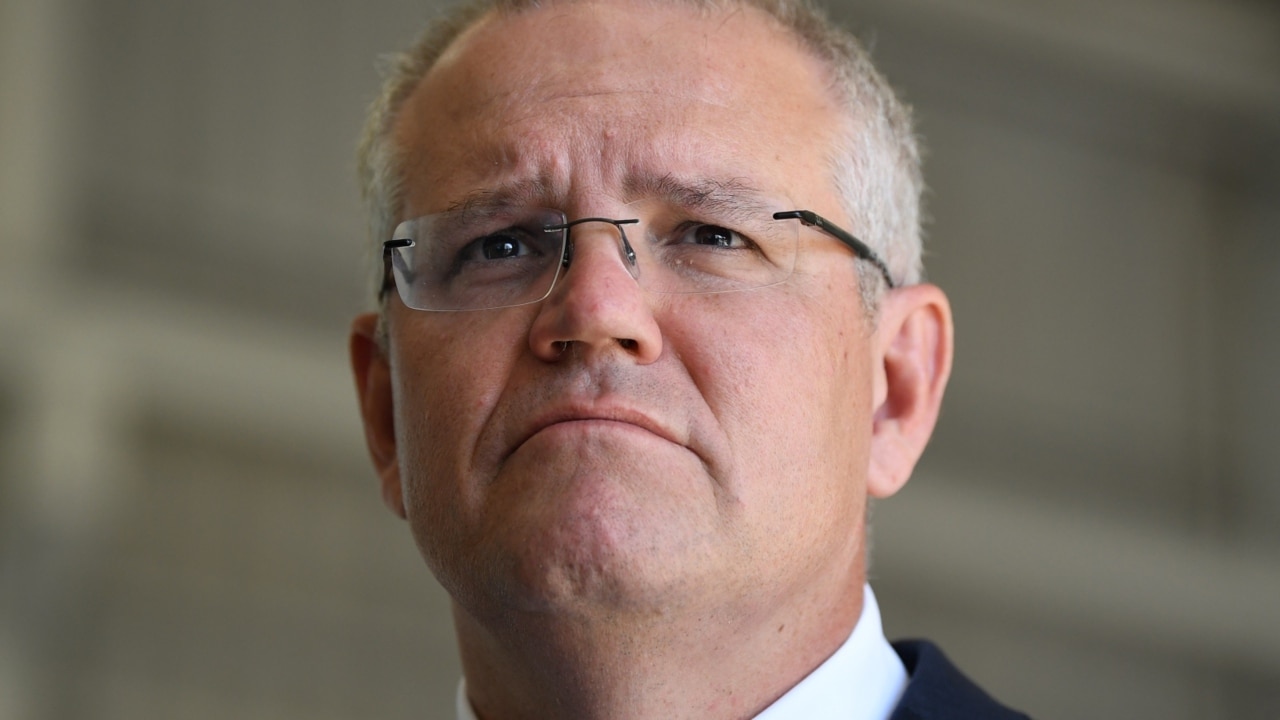Australian economy: GDP grew by just 0.5 per cent in June quarter
Australia’s quarterly GDP growth has slowed to a ten-year low of just 0.5 per cent, but Treasurer Josh Frydenberg says the latest figures are a ‘repudiation’ of the economic doomsayers.

Economy
Don't miss out on the headlines from Economy. Followed categories will be added to My News.
The Australian economy grew just 0.5 per cent in the April-June quarter, new data shows.
The Gross Domestic Product figures, released at 11.30am AEST today, were exactly as predicted, with 1.4 per cent year-on-year growth.
Despite being the lowest growth figures in 10 years, they also show that Australia’s record period of growth continues, with the country now entering its 29th year of economic expansion.
Treasurer Josh Frydenberg welcomed the result, saying it was a “repudiation of all who have sought to talk (the economy) down.”
Some financial experts had expected the June quarter figures to be as low as 0.2 per cent or 1.1 per cent year on year, but the actual result was on par with most experts’ expectations.
Today’s figures stave off concerns that the country was heading towards a recession, which happens when the economy experiences two consecutive quarters of negative growth.
Australia was last in recession in 1990 and 1991.
MARKET RESPONSE: ‘WE’VE REACHED THE BOTTOM’


Michael McCarthy from CMC Markets told Sky News the result was “a reasonably good performance over the quarter”, even though it was the lowest quarterly growth figure in 10 years.
Markets were steady after the announcement, he confirmed, while the Aussie dollar rallied slightly against the greenback.
Craig James, Chief Economist with CommSec, said a recession was not coming and the outlook was “much more positive”.
“We’ve reached the bottom in terms of economic growth,” he said. Today’s figures were impacted by the US/China trade war and the May federal election — traditionally a time when businesses and consumers slow down their activity, he said.
“We are always going to go through some slow periods of economic growth, but there are no shortage of stimulus factors to maintain our economic growth,” Mr James said.
Interest rate cuts, government infrastructure spending, the recent rise in house prices and continued growth in the export sector would all contribute to a better economic figure next quarter, he predicted.
When asked whether the government should provide more economic stimulus on the back of today’s figures, Mr James said “the government should always be responsive to the needs of the economy”.
“The best thing federal and state governments can do is ensure they’re not dragging their heels in terms of infrastructure projects,” he said. “We’ve got to make sure those projects are continuing to barrel ahead.”


Deloitte Access Economics director Chris Richardson told Sky he would advise against additional government stimulus measures “because things could get worse”.
Brexit, the US/China trade war and tensions over oil in the Middle East could all have an impact on the Australian economy in the near future, he stated.
“There is already a lot of stimulus in the works,” he said.
“The Australian economy is slow but it’s not diastrous.
“I would prefer to hold off now ... and keep our powder dry in case it’s needed some staged down the track.”
BIS Oxford Economics economist Sarah Hunter said there were no big surprises, with net exports and government spending underpinning sluggish growth. The main drag came from inventories and construction, while consumer spending remains in the doldrums, increasing by just 0.4 per cent for the quarter — albeit a slight uptick on the pace of growth over the prior quarter.
Dr Hunter said growth was likely to remain relatively subdued until the early 2020s, but that year-on-year expansion may have found a floor. “The June quarter is likely to be the trough for the (year-on-year) growth rate … as the very weak quarters from late 2018 and early 2019 drop out of the calculation,” Dr Hunter said.
FIGURES REPUDIATE ECONOMIC DOOMSAYERS: FRYDENBERG

Hidden trap in $1080 tax refund
Rates on hold: Three things your bank won’t tell you
Treasurer Josh Frydenberg said today’s figures were a “repudiation of all who have sought to talk (the economy) down”.
“Significantly, these numbers do not incorporate the passage through the parliament of the most significant tax cuts in more than 20 years, and the full impact of the RBA decision to reduce interest rates by 50 basis points,” he said.
“Today’s national accounts show the Australian economy continues to grow in the face of significant headwinds, both international and domestic. It’s a difficult time for global economies, with Singapore, Sweden, Germany and the United Kingdom all having negative economic growth in their June quarters,” Mr Frydenberg said.
“And the IMF and the OECD have both downgraded their global economic growth forecasts. “In the face of these challenges and the uncertainty created by increasing trade tensions between China and the United States, the Australian economy has again proven its remarkable resilience.”
Similar comments came from Prime Minister Scott Morrison this morning.
“Germany just had a negative quarter of growth, Australia hasn’t,” he said. “In a tough climate, we’re actually battling away quite well.”
Labor had already seized on the weak figures, with Shadow Treasurer Jim Chalmers telling the ABC this morning: “This is the inevitable consequence of a government which has a political strategy but not an economic plan.
“The government needs to come up with a plan to turn the economy around,” he said.
Labor leader Anthony Albanese said this morning that “all of the key economic indicators at the moment are negative for the government”.
“They don’t have a plan to deal with stagnant wages, with very low economic growth, with
low consumer demand, with productivity growth going backwards,” he said. “What I’d like to see from the government is more considered policy and less politics.”
TAX REFUNDS COULD PROVIDE SPIKE

The government believes tax refunds could give the economy a shot of stimulus, particularly in the retail sector.
The Australian Taxation Office has received more that 7.8 million individual tax returns to date — a 15 per cent increase on the previous year.
“We have issued over 5.5 million individual 2019 income tax refunds with a total value of over $14.2 billion,” an ATO spokeswoman said.
As millions of Australians waited for their tax refund retail spending fell by an unexpected 0.1 per cent in July, missing forecasts of a 0.2 per cent rise.
Total seasonally adjusted retail spending fell to $27.41 billion for the month, with cafes, restaurants and takeaway services leading a first fall in three months, the Australian Bureau of Statistics reported on Tuesday.
The Reserve Bank, which kept the cash rate on hold at 1.0 per cent on Tuesday, flagged it would ease rates further “if needed to support sustainable growth”. The outlook for the global economy remained “reasonable”, the RBA said, although the risks were tilted to the downside.
“A further gradual lift in wages growth would be a welcome development,” RBA Governor Philip Lowe said in a statement.
HOUSING BOOST, RATE CUTS ‘SHOULD HELP’

Trade Minister Simon Birmingham said the figures highlighted the value of trade agreements and the strength, resilience and international competitiveness of the export sector.
“We remain committed to our plan of ensuring that around 90 per cent of Australia’s trade is covered by free trade agreements by 2022,” he said.
Originally published as Australian economy: GDP grew by just 0.5 per cent in June quarter
